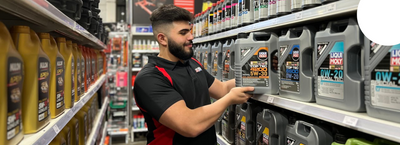When it comes to towing trailers, whether for work or leisure, ensuring that your trailer's lights and wiring are in perfect working order is crucial for safety on the road. Over time, wiring and lights can wear out, leading to issues like non-functioning brake lights, turn signals, or even complete electrical failure. In this comprehensive guide, we will walk you through the step-by-step process of replacing your trailer's wiring and lights to keep you and others safe during your journeys.
Tools and Materials You'll Need:
Before you start, gather the necessary tools and materials. You'll need:
- New trailer wiring harness
- Trailer lights (tail lights, brake lights, turn signal lights, and marker lights)
- Wire connectors and heat shrink tubing
- Wire stripper/cutter
- Wire crimper
- Screwdrivers
- Pliers
- Heat gun or lighter
- Electrical tape
- Multimeter (for testing)
Step 1: Safety First
Ensure your trailer and tow vehicle are parked on level ground and disconnect the trailer from the tow vehicle. Put on your safety gear, including gloves and safety glasses. Safety should always come first.
Step 2: Assess the Damage
Examine the existing wiring and lights to identify any damage or wear. Make a note of the wiring's color-coding, as this will be essential during the replacement process.
Step 3: Remove the Old Wiring and Lights
Start by disconnecting the old wiring and lights from the trailer. Typically, these will be secured with screws or clips. Carefully remove them while taking note of how they were positioned.
Step 4: Prepare the New Wiring Harness
Lay out your new wiring harness and lights, comparing them with the old ones to ensure they match in terms of length and specifications. Trim the new wires if needed, leaving some extra length for flexibility.
Step 5: Wiring Connection
Match the colors of the wires on the new harness with those on the trailer. Common wire colors include brown (running lights), green (right turn/brake lights), and yellow (left turn/brake lights). Use wire strippers to expose a small amount of wire at the end of each wire and twist the corresponding wires together. Secure them using wire connectors and then cover the connections with heat shrink tubing, heating it with a heat gun or lighter to seal it.
Step 6: Installing the Lights
Mount the new lights in the same positions as the old ones. Typically, tail lights are mounted at the rear corners of the trailer, brake lights above them, and marker lights along the sides. Secure them tightly with screws.
Step 7: Connecting the Lights
Connect the wires from the new lights to the corresponding wires on the wiring harness using the same wire connector and heat shrink method as before. Ensure all connections are secure.
Step 8: Testing
Before sealing everything up, test your new wiring and lights. Reconnect the trailer to your tow vehicle and check all functions – running lights, brake lights, turn signals, and markers. A multimeter can help you troubleshoot if any issues arise.
Step 9: Securing and Protecting the Wiring
Once you've verified that everything is working correctly, secure the wiring to the trailer using clips, brackets, or adhesive-backed clamps. Make sure the wiring is well-protected and won't come into contact with moving parts.
Step 10: Final Checks
Double-check all connections and wiring to ensure they are secure and protected. Zip ties can help tidy up any loose wiring.
Step 11: Maintenance and Regular Checks
Congratulations, you've successfully replaced your trailer's wiring and lights! To ensure continued safety and functionality, perform regular checks and maintenance. Inspect the wiring and lights before each trip and replace any damaged components promptly.
In conclusion, replacing your trailer's wiring and lights is a manageable DIY task that can greatly enhance safety on the road. By following this comprehensive guide and taking the time to ensure everything is connected and sealed correctly, you can enjoy worry-free towing and peace of mind knowing your trailer's lights are in top condition. Safe travels!









